- News
- Reviews
- Bikes
- Components
- Bar tape & grips
- Bottom brackets
- Brake & gear cables
- Brake & STI levers
- Brake pads & spares
- Brakes
- Cassettes & freewheels
- Chains
- Chainsets & chainrings
- Derailleurs - front
- Derailleurs - rear
- Forks
- Gear levers & shifters
- Groupsets
- Handlebars & extensions
- Headsets
- Hubs
- Inner tubes
- Pedals
- Quick releases & skewers
- Saddles
- Seatposts
- Stems
- Wheels
- Tyres
- Tubeless valves
- Accessories
- Accessories - misc
- Computer mounts
- Bags
- Bar ends
- Bike bags & cases
- Bottle cages
- Bottles
- Cameras
- Car racks
- Child seats
- Computers
- Glasses
- GPS units
- Helmets
- Lights - front
- Lights - rear
- Lights - sets
- Locks
- Mirrors
- Mudguards
- Racks
- Pumps & CO2 inflators
- Puncture kits
- Reflectives
- Smart watches
- Stands and racks
- Trailers
- Clothing
- Health, fitness and nutrition
- Tools and workshop
- Miscellaneous
- Buyers Guides
- Features
- Forum
- Recommends
- Podcast
feature
How much faster is an expensive road bike? Testing a top-end race bike vs a Facebook Marketplace bargain
If we were to rock up to a traffic-free circuit with one very expensive road bike and one much cheaper one, would we be able to measure any significant speed differences in a timed test? Can you really 'buy' speed? Armed with a racing weapon that is (nearly) the pinnacle in road bike technology, a modest bargain from Facebook Marketplace, some power meter pedals and bags of enthusiasm, we tried to find out...
The bikes
Eagle-eyed readers from South West England might recognise the location as Odd Down circuit in Bath, a purpose-built cycling track that is well used to very fast bikes. Today's it's home to my own S-Works Tarmac SL7 race bike, that has appeared on the road.cc site and YouTube channel multiple times, and more camera-shy, rim brake-equipped Cannondale CAAD10.
These bikes have been selected because both are pretty synonymous in the circles that they're representing. The SL7 (although now superseded by the very similar Tarmac SL8) was undoubtedly one of the fastest bikes of the pro peloton when it launched, and we reckon it probably still would be three years on. We wanted to give the value option the best possible chance, so went for Cannondale's highly-rated CAAD rather than something rubbish off Amazon.
The CAAD10 cost just £350 on Facebook Marketplace, and comes equipped with a mechanical Shimano 105 groupset. As well as being a bit of a bargain, the CAAD10 also happens to be a very common first road bike, an entry-level bike that has earned the highest praise over the years not just from us, but from cyclists all over. We think, then, that this bike is well equipped to represent as our budget contender.
Even though this bike is perfectly functional, a lot of riders who start with something entry-level might improve, and wonder if progressing to a more expensive bike might help them to improve, beat their mates and steal that Strava KOM. If you listen to the marketing hype from just about any bike manufacturer, then it’s very easy to believe that would be the case... well, we’re here to see if dropping a shedload of cash in the hope of speed is futile or not.
> Best road bikes under £1,000
Unfortunately for us cyclists, expensive purchases don’t stop at just bikes. We’re bombarded with releases from clothing and equipment manufacturers too, all claiming that their top-of-the-range items will help you smash those personal bests. For our high-end bike, we've handpicked a selection of equipment, regardless of its price, that we think is well up there with the very fastest in the business.
The money-no-object setup
- Specialized S-Works Tarmac SL7
- Castelli Sanremo RC Speedsuit
- Rule 28 aero arm sleeves, aero socks and aero base layer
- Princeton CarbonWorks 65/60 wheels
- Aero cockpit - Roval Rapide bars
- Specialized Evade 2 helmet
- Goodyear Eagle F1 Supersport R TLC tubeless tyres
Nearly all of the equipment above has been seen used in the World Tour peloton at some point. The Sanremo speed suit is what you'll find the likes of Fabio Jakobsen and Remco Evenepoel using for sprint stages, while the Rule 28 aero base layer has been spotted on Magnus Sheffield of Ineos Grenadiers, and more recently Bora Hansgrohe riders at the Tour of Britain.
Aero socks are a more cost-effective upgrade, and no stone has been left unturned with an aero helmet and tubeless TT tyres to help bring down the rolling resistance as well. This really is an enviable setup that wouldn't look out of place on the startline at the highest level of bike racing.
The budget setup
- 2017 Cannondale Caad10 rim brake
- Shimano 105 mechanical groupset
- KMC chain
- Altura cycling jersey
- Madison sunnies
- Planet X overshoes
- Shimano RS110 aluminium wheelset
- Giro helmet
This bag of spanners (ok, maybe that's a bit harsh), has served Tom extremely well over years of winter riding. As mentioned earlier, the bike cost just £350, and as far as I can see, doesn’t have any idea what aero is. The bars are a standard round profile, the wheels are alloy and shallow, and the tyres are built for durability rather than speed.
Also, remember these contraptions from yesteryear? Rim brakes! The cable routing is external, too.
The rest of the gear doesn't break the bank, and most importantly it all fits and is pleasant enough to use and wear while riding. It also all costs around 30 times less than our hero setup!
The test
The test consisted of two riders completing six efforts each - three with the cheap setup and three with the expensive equipment - on a flat, repeatable course with no traffic. Both bikes are fitted with power meter pedals, so that the effort is consistent between the two bikes and unaffected by fatigue. Both Tom and I aimed for an average power of 300 watts for all efforts.
The position on each bike has been replicated across cheap and expensive where possible, with the same saddle height, reach, stack height and bar width to avoid a difference in rider position contributing to any difference in times. Moreover, both Tom and I will maintain the same hand position for all tests and take the same lines through the corners.
Pre-test predictions
Jamie: "Having done previous tests on shallow vs deep wheels, I expect there to be a small difference between the two setups as this is quite a fast circuit. However, I expect this to be marginal as the cheaper clothing is well-fitted, and the position between the two bikes is pretty similar."
Tom: "Although I think to an extent you can buy some speed, I don't think we're going to be able to see a meaningful difference in today's test. I think that manufacturer's claims are all too often exaggerated, and your speed is far more down to the watts you put through the pedals.
"I have no doubt that Wout Van Aert would still win basically everything on my mighty £350 Cannondale CAAD10!"
Results: Can you really buy speed?
On average, the 3.4km circuit was ridden at around 42kph (26.1mph). This is faster than a typical riding speed even on many flat routes, so it's worth noting that you can expect to experience less aerodynamic benefit when travelling at lower speeds.
All efforts were completed aiming for an average power of 300 watts, with the power not deviating by more than 2 watts either side on all efforts.
From the times above, we can clearly see that the more expensive setup was indeed faster in both cases. Given that Tom's margin of error was four seconds and the difference between his average times of the two setups was just five seconds, it could be argued that it's not possible to conclude that the more expensive setup was faster.
However, given that my results provided a slightly larger difference (9 seconds, or 3%) as well as the fact that at no point did the cheaper setup post a faster time, then I believe that it is possible to conclude that the expensive equipment did provide a measurable advantage, albeit a small one.
As always, any real-world testing should be taken with a pinch of salt, but given the consistency of results, we're confident in saying that you can buy speed... but not a lot!
So, should you spend more to go faster?
So, in conclusion, can you buy speed? Well, yes you can. Perhaps the question we should be asking instead is, is it worth it?
I'm sure you can all predict what the answer is here: it depends! If you're a World Tour pro or an elite racer where the margins of victory are often fractions of a second, then the difference in equipment could be the difference between winning or losing that race. Unfortunately though, fast bikes, clothing and equipment often cost the most due to the premium materials and countless hours of research and development that go into them.
For the likes of you and me, amateurs interested in going as fast as possible with as little effort as possible, then buy what you can justify. There's certainly plenty of low-hanging fruit that will give you the vast majority of the gains. For example, even though we didn't test components individually, we know from other tests that you can get most of the gains from a few much more cost-effective upgrades.
> Best road bike upgrades under £50
For example, if I was trying to go as fast as possible for as cheap as possible, then short of putting the hours in during training, aero socks, a well-fitting jersey that doesn't necessarily have to cost a fortune, tyres and better inner tubes would be well up my wish list.
If you'd like to delve a bit deeper into how much faster a set of deep wheels might make, then you then check out our article here.
The other difference between pros and amateurs is, of course, the fact that very few of us have maxed out our training potential. Perhaps that money could be better spent on a regimented training plan, or training camp in the sun.
Personally, I think it’s great that any of us can save up for the literal pinnacle of tech in our sport - but it's also worth remembering that all this equipment is designed to save just a few watts, so unless you’re at the very highest level, then it’s worth handpicking your upgrades to suit your budget without fear of getting dropped.
Edit: Last weekend I got absolutely thrashed in a road race by multiple juniors on set-ups a quarter the price of mine. It was a humbling reminder that training pays off!
Were you expecting a bigger or smaller gap between the high-end and budget equipment? Let us know in the comments section below...
Jamie has been riding bikes since a tender age but really caught the bug for racing and reviewing whilst studying towards a master's in Mechanical engineering at Swansea University. Having graduated, he decided he really quite liked working with bikes and is now a full-time addition to the road.cc team. When not writing about tech news or working on the Youtube channel, you can still find him racing local crits trying to cling on to his cat 2 licence...and missing every break going...
Latest Comments
- bmxboyx01 40 min 48 sec ago
It has to be an organised group. My mate had his Canyon gravel bike with every single upgrade going on it. So many go each year, but the sleepy...
- chrisonabike 1 hour 31 min ago
Think this line of argument * is almost a default and not just for collisions involving cyclists. e.g. "They ran into me ergo it's their fault"....
- Rapha Nadal 1 hour 56 min ago
I think I'm just going to go down half a size which should fix it.
- Rendel Harris 2 hours 32 min ago
No mention of the cost...at $1449 I think I'll stick to the old "I feel a bit thirsty, better have a drink" system.
- ChrisA 2 hours 41 min ago
One bike seized? I'm sure there were four of them. ‐‐---- Quote "E-bike riders caught using police drone" Did the steal the drone, as well?
- ChrisA 2 hours 52 min ago
Mirror advised.
- BikingBud 4 hours 3 min ago
Yup - Rivermind! ****SPOILER ALERT***** https://www.radiotimes.com/tv/sci-fi/black-mirror-common-people-ending-e...
- lesterama 5 hours 5 min ago
A friend told me that Gravaa doesn't work with inserts. Visma actually glued their tubeless tyres on to avoid tyre detachments! Sounds like a...
- Velophaart_95 5 hours 24 min ago
That was my first thought when I saw, and read it........
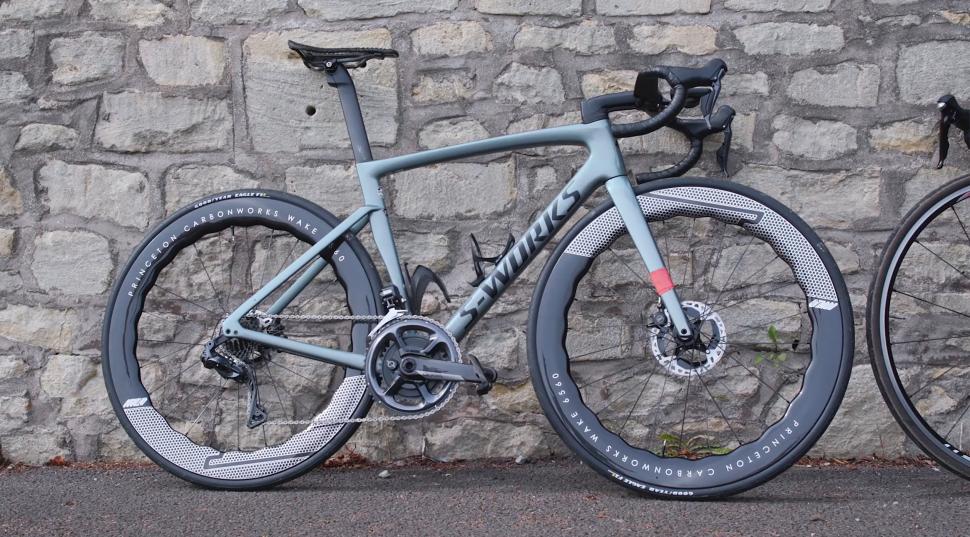

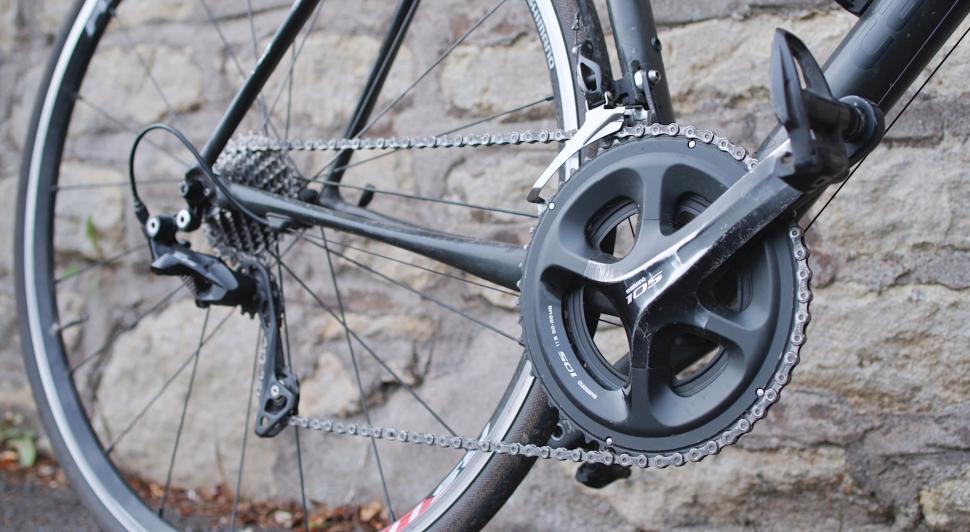
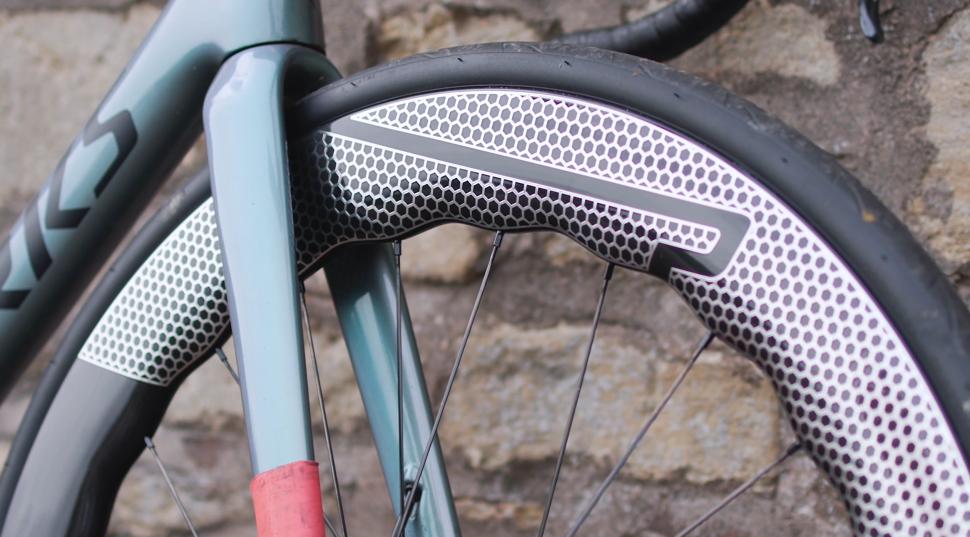
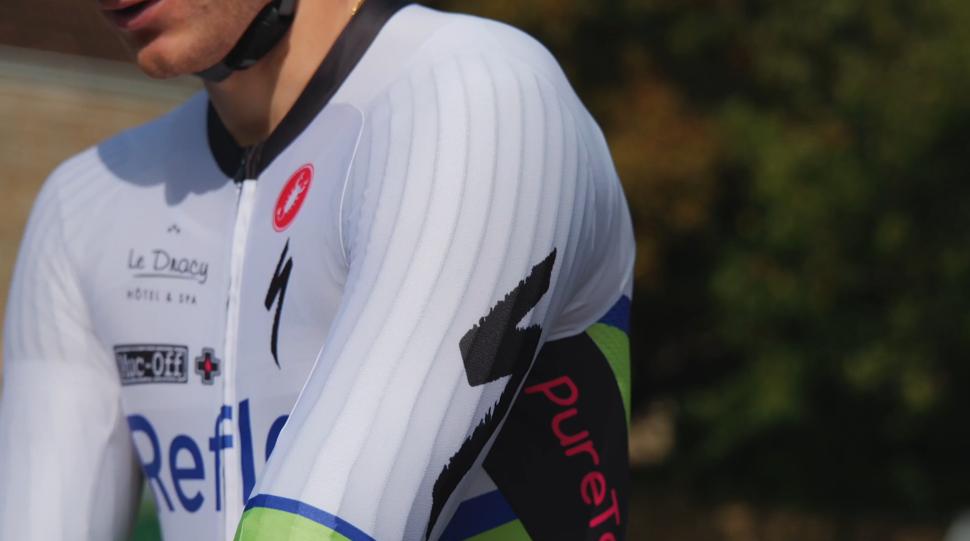
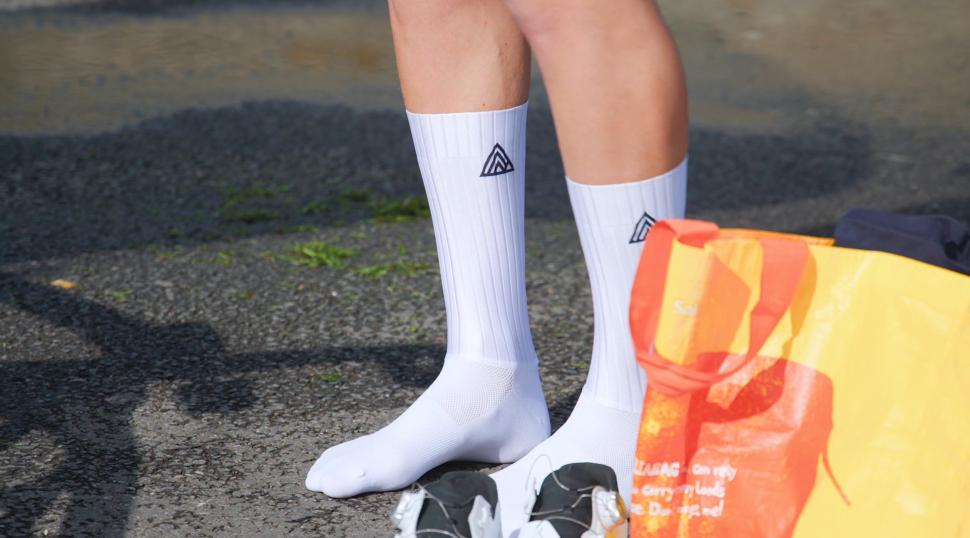

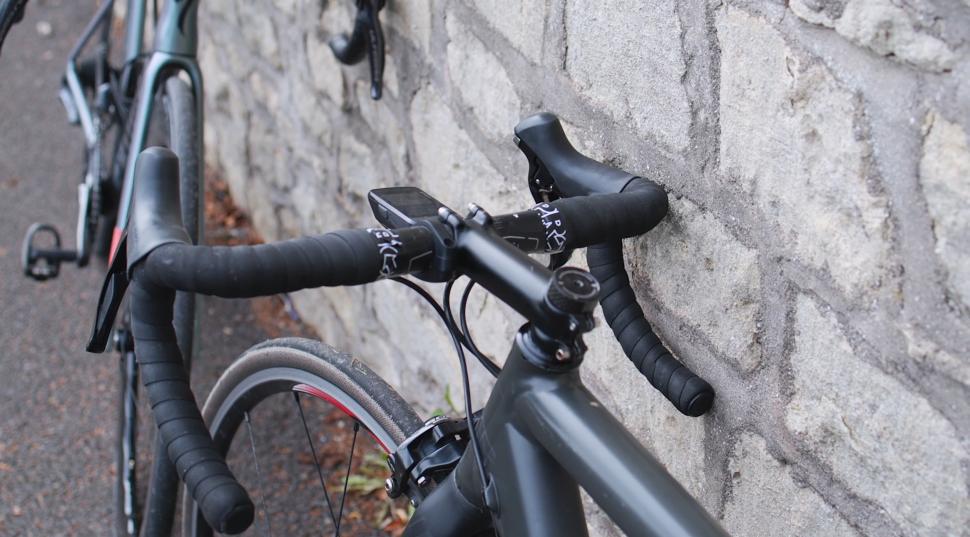

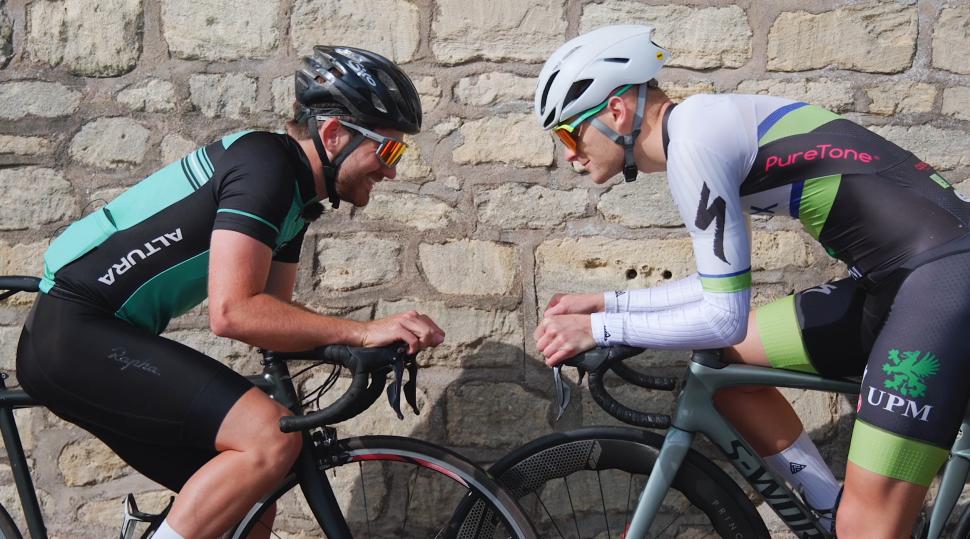
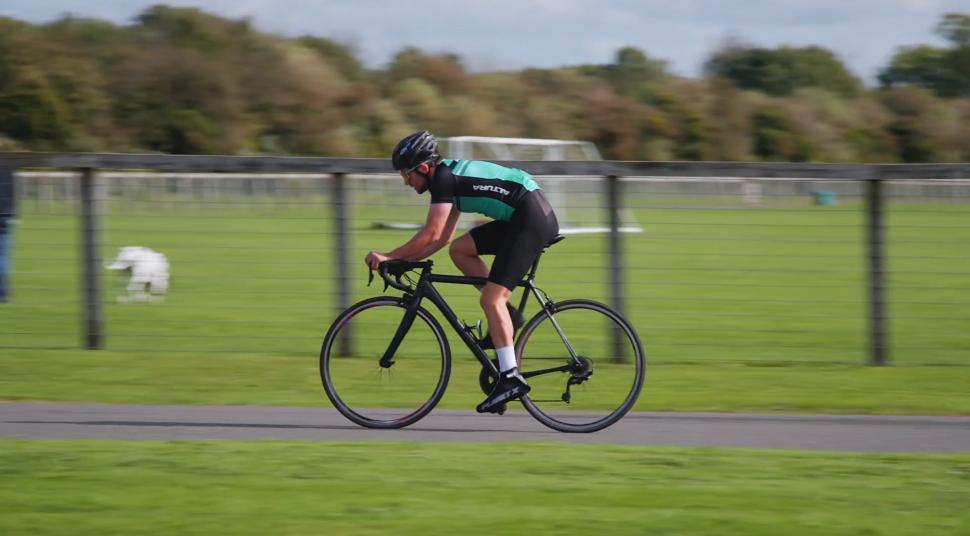
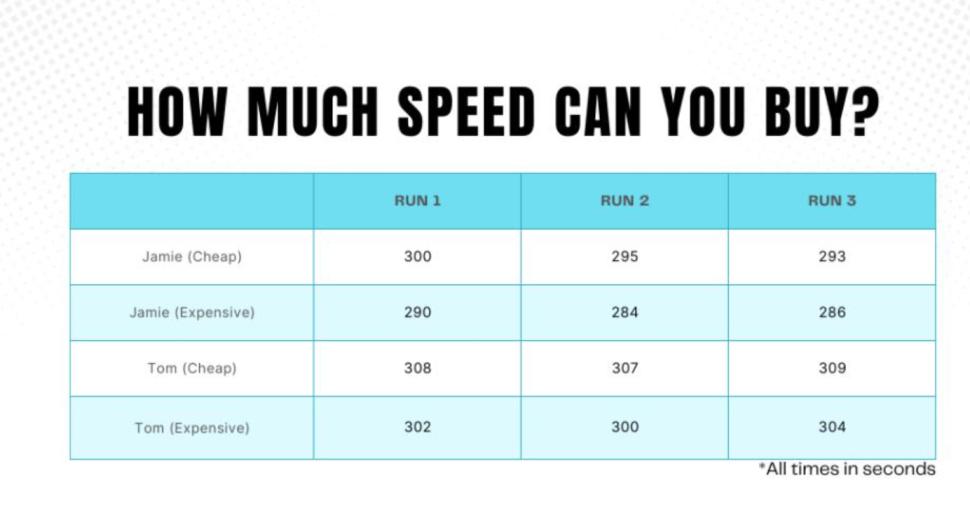
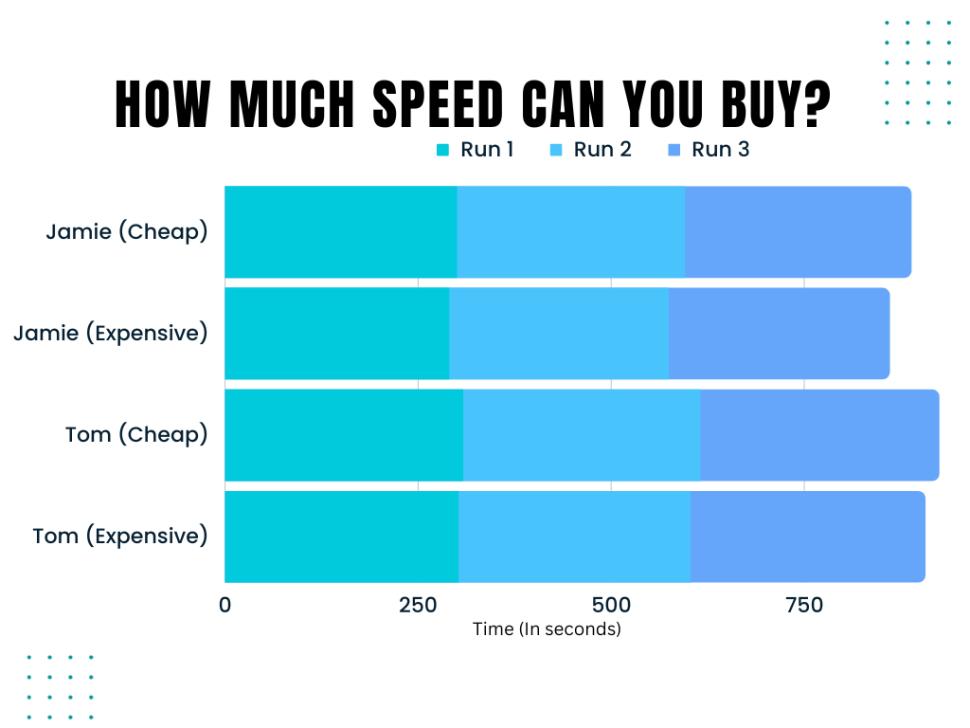
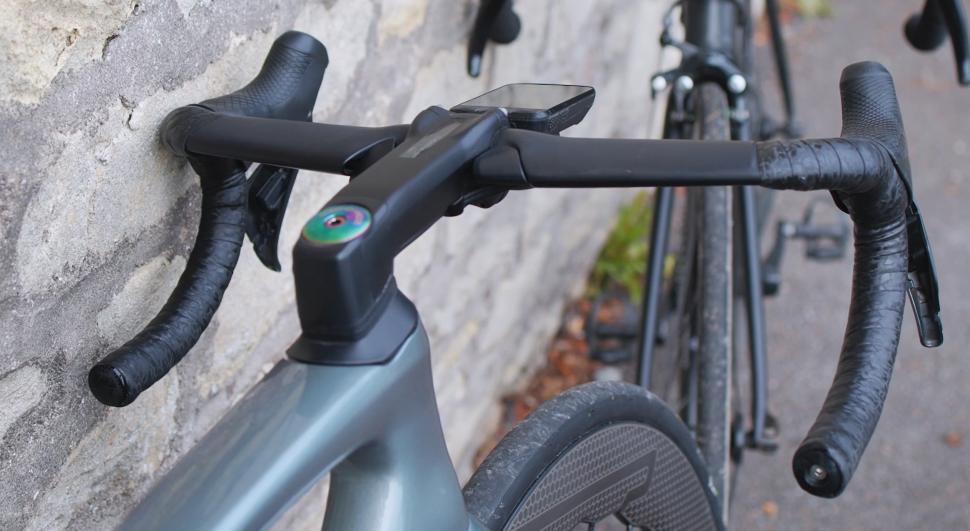


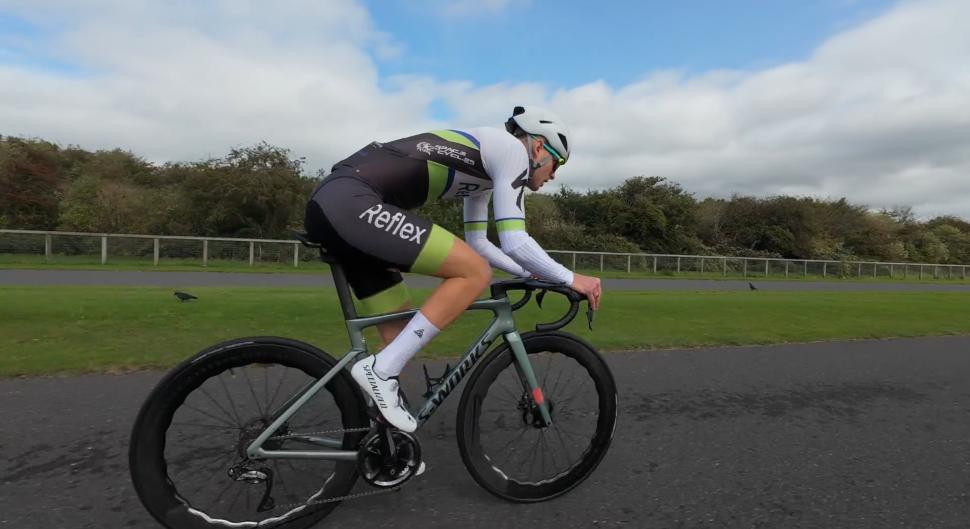
Add new comment
21 comments
If you're not racing, is speed even important? NO! What's important is the exercise you're getting and a faster bike isn't going to change that whatsoever, your output is your output that's all there is to it, improving your output can be done on tricycle...fine, that's a bit over the top, but you get the idea.
I guarantee you that Froome can beat everyone reading this site on a Walmart road bike!
That's true to an extent but you omit the motivation that the pleasure a really lovely bike gives one to stay out longer and ride farther and thus get more exercise.
Are you saying that you can only ride long distances on a $10,000 bike, but not on a $1,200 bike? Don't go there with me, I've been around bikes for a very long time, and around people that ride bikes. There was a guy who traveled over 1,200 miles in 20 days on a $350 Walmart road bike, and he was fine, surprisingly so was the bike, but it was brand new, a Schwinn Volare. I have a neighbor who rides a 1965 Schwinn 3 speed racer and he used to ride it over 50 miles on a single ride but he's 80 now and only puts in 10 miles a day, which by the way, they do that quite a bit in Europe on those sorts of bikes.
I disagree with you, a person has to get used to riding, as well as breaking in their butt and the saddle just as you would have to do with any bike regardless of price. Obviously, a $150 brand-new bike isn't ideal, mostly from the standpoint of reliability than it is how far you can go on it, but any $800 bike today can easily take on a one-day 100-mile ride once you're used to riding, and do so in the same comfort as a $10,000 bike as long as the seat is the same on both and both bikes fit you the same.
Agreed - only top class professional racers (AKA mobile advert hoardings) need worry about some bike bit costing thousands making them 10 seconds faster and therefore The Winnah! Being The Winnah! sells more cycling gew-gaws, after all.
Myself I'm interested in comfort, reliability, efficiency, fixability, carrying capacity, stickability and several other things long before the quality "faster" is listed. Cycling, as with so much else, is really about the process, not the end of the ride - unless you're an advert hoarding. Do a ride slower and you can do it for longer - gotta be good.
Mind, there are the bike frockers ...... . For these, the Number One attribute is fashionable bling, which often includes a ridiculous price tag as this obviously means it must be "better", in the eyes of other bike frockers at least.
oops 👀
+1 for disappointed with the clothing and helmet aspect of this. Just buy the superbike from the shop, and buy the clunker as is, then test them.
Also, who buys a bike for how it goes over 5 minutes? At a constant power? Repeat the tests on the road, for an hour, 2 hours and 4 hours. That's what people do with their bikes. Can the guy on the super bike keep the power output up longer? Will it fatigue more or less than the cheapo?
The title says its about the bikes then you confuse the issue by including the clothing. Far more interesting if you did the test using the same clothing and then trying a wheel upgrade on the budget bike. That IMO would be a worthwhile test and finally use different clothing if desired but thats not what the headline states.
Ehhm I hope you had two different set of clothes, otherwise the real battle would have been who would be tested first.
As expected, the big difference was between the riders and not equipment. Why? because the "bargain" CAAD is actually a great bike, and if you kept everything else the same (including wheel type) the difference may be had been minimal.
This is a 2% improvement from the absolute bottom end of the sport to the absolute premium end equipment, under optimal conditions for the top drawer aero bike and clothing.
TWO PERCENT.
Honestly this should be regarded as a scandal.
I don't know... you could also see regard it as a heartening outcome, showing it's really not necessary to spend loads for good performance.
Bit harsh calling a 2017 CAAD10 "the absolute bottom end of the sport" too: the price might be - but again, I'd say that's a positive.
I guess fundamental change and innovation is hard - splurging MAMILs want bikes like the pros' - and the UCI limits how much those can change (never mind that the engine is not included!). So businesses focus on incremental changes, fashions and marketing - and plenty of us lap it up as if they were revolutionary (no pun intended) advances.
I'd say 'performance' ≠ faster. Performance = doing what you need doing, which could be faster but it could be hauling the groceries.
Well, yes - but in this case we're comparing bikes designed to be ridden fast on how fast they ride.
When it comes to hauling the groceries, my £30 hybrid smashes these two (even when I'm not wearing aero socks).
The difference in clothing used means this test is not just about the bikes any more. I'd like to see it done with the same clothing worn by testers on both bikes.
I'm also very curious about what difference a wheelset upgrade would make to the Cannondale. Get back on to FB Marketplace please and find some wheels.
The clothes will have had as big a difference as the bike and wheels between the two setups.
also what was the wind like? aero likes a little yaw
The clothes will have made a _much bigger_ difference - most of the aerodynamic resistance is from the rider.
If only there were some way to determine the differences in aero and rolling drag between the two bikes. Hmmm.
You could invent one and call it, I dunno, the Chung Method? You should do that.
Put your recommended GP5000 STR tires on the CAAD and do an off-the-shelf S Works. I bet Specialized wouldn't like that very much.
Forget the frame, groupset , finishing kit. I put that result purely down to the wheels. I would expect the time difference on the same bike with deep section carbon rims over shallow aluminium rims regardless of the bike or rider.
Therefore I would like to see this redone but with a set of budget carbon rims on like Prime. I bet the time gap isn't so big then.
I mean, this has been known forever really hasn't it. A better bike is worth maybe 5-10% if you go from low end to very high end. Training for a few months could easily improve the average ride by 20% or more. People don't really buy expensive bikes because they are miles faster. They do it because they like nice things. My bike is well beyond my skill level but I love it and I love riding it.
Even the "better" bike may in practice be less efficient in speed-for-power terms, as the "lesser" bike may be better maintained and set up than the sooper-dooper 'un. When I raced, I knew many who paid little or no attention to keeping things like chain condition, tyre pressure and similar aspects at optimum. They didn't een know what optimum was. It was often the ones who bought super-bikes that did little maintainance, as they assumed having a super bike was all they needed to go faster.
But in any case, unless you do race, in what way is the following quote from the article the case:
"We’re bombarded with releases from clothing and equipment manufacturers too, all claiming that their top-of-the-range items will help you smash those personal bests."
If its the bike tech that makes you faster, in no way are you achieving a "personal best" but rather an effect of being able to buy a bit or ten of better technology, assuming your wallet is fat enough. Your personal performance in terms of cycling fitness is just the same unless you improve yourself, not the bike.
Anyrooadup, When I be chief of the UCI all the races will be an identical inexpensive bikes, probably with only three gears or even one.
A comfortable and efficient bike is better than one that ... isn't. But "efficient" can mean a great deal more than just fast for the power input, even if that's one requirement of some forms of cyclists/cycling.